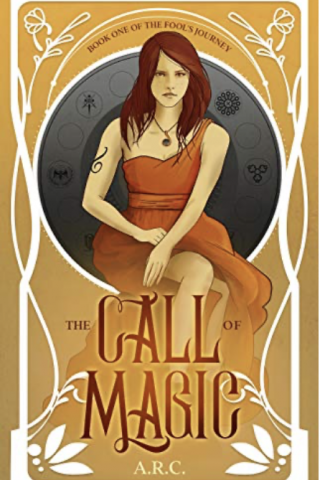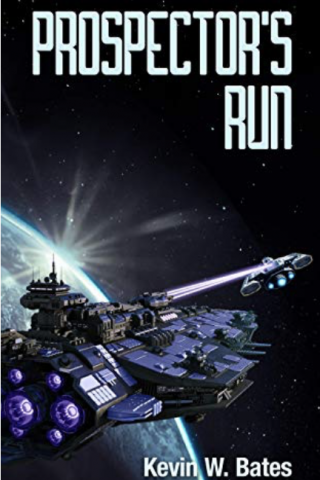Mud and Bug both love the same thing: hiking. Certain that this passion can transcend the complications of their relationship, they set off on a journey to walk from Canada to Mexico, 2,660 miles on the Pacific Crest Trail. Together, they brave snow-covered slopes in the Cascades of Washington, walk through lava fields in Oregon, navigate a smoky haze of wildfire in Northern California, climb eleven thousand foot mountain passes in the High Sierra and revel in the desolate beauty of the Mojave desert in fall.
But just two weeks into the adventure they break up. With four months of hiking still ahead, they find that navigating the new terms of their relationship is just as hard as navigating the wilderness. As a veteran U.S. Army Ranger, Mud struggles with chronic pain, post-traumatic stress disorder and resistance to intimacy. Bug longs for the connection she once had with her best friend. There’s no doubt that each will complete the trek, but will they finish together?
A Walk with Mud is an honest, compassionate look into the physical and emotional ups and downs of an epic journey. With graceful narration, this memoir puts you right in the center of the most beautiful places on the West Coast. Moments of love, heartbreak, humor and sincerity keep the story fresh and engaging up to the very last page.
Excerpt

We lie bundled in our sleeping bags, our heads next to each other in the shelter of our tent.
“I love you, Mud,” I say, staring upward into nothingness.
“I love you too, Bug. We make a good team,” he says.
With this, we both fall asleep. We’ve hiked thirteen miles today. Mud’s friend Eric is with us and he sleeps on the other side of the campsite, cocooned in the one-person tent he bought from me last month. It feels normal, comfortable, here in the forest. Like the rest of life can just fade away — the stress, the fights, the responsibility. We’re strong and happy, unfazed by the 2,677 miles of walking that lay ahead.
Mud and I are headed south on the Pacific Crest Trail — a journey from Canada to Mexico that will take us almost five months. Even though it’s summer, thoughts of snow weigh heavy on our minds. In order to complete the entire trail in one season, we had no choice but to start hiking early in July before the snow melted. Our deadline was clear — nineteen hundred miles in the first three months, then 750 more through the desert. This short window between snow-melt and snow-fall is one of the main reasons 90% of PCT hikers start in Mexico and head north, avoiding the pressure. Both of us are strong hikers, confident that we can walk from the Canadian border to the southern-most pass of the high Sierra before the winter snow falls in October, then on to the Mexican border by the end of November. But to do this, we have to start early and hike fast.
The North Cascades of Washington in early July are a tricky thing. The weather is beyond perfect — warm temperatures and reliably clear skies. The summer sun’s only just begun to melt the winter snowpack, creating trickles of water to cover green meadows in shimmering splendor. Rivers and creeks fill and roar through the wooded foothills at lower elevations. The Pacific Crest Trail, however, follows the crest of the west coast mountain ranges, maintaining elevations generally above four thousand feet. The snow pack at these elevations is still significant enough to cover the trail by several feet, making it dangerous and difficult to navigate.
The PCT Southbound Facebook page was abuzz all spring with talk of start dates, snowmelt and the dangers of snowy traverses. Just weeks earlier, a man lost his footing and tumbled out of control down a snowy slope. He was walking north from Hart’s Pass to reach the monument marking the Northern Terminus of the trail at the US-Canada border. It’s about a thirty-mile walk, and the only legal way to officially start a thru-hike at the Canadian border. Crossing into the States from Canada on the PCT is now illegal. So thru-hikers start walking north from Hart’s Pass, the northern-most access point in the U.S., to tag the monument at the border, then turn around and hike south. It turned out that man had to be airlifted out and taken to the nearest hospital, crushing any chance he had of completing the hike. But that was weeks ago — the snow will have melted, we thought. Mud and I are stronger, tougher, and more careful than that guy. We told ourselves it’d be fine.
In the morning, we leave Eric at Holman Pass where we’d camped; he has no stake in walking all the way to the Canadian border just to turn around again like Mud and I planned. He’s spending the first few days with us just for the outdoor experience. He spends the day reading and wandering the area while we begin our mission to the border. The air is crisp as we climb out of the valley, through a meadow and into the alpine snowfields. So far, the snow presents little in the way of danger. We plod through it, enjoying a small rush of adrenaline when we follow the trail perpendicular to a steeper, snow-covered slope.
A few hours later, we reach Rock Pass. The trail follows a ridge for a short time and then switches sharply back, disappearing below a wall of snow. It points us down the north side of the slope, but gives no more guidance than that — down. It’s the steepest slope we’ve seen so far. As though we’re on the rim of a giant bowl and can’t see its bottom. I stare into infinity below.
Mud looks back at me, “I don’t see many options… I think we should glissade.” An outline of the trail is visible twenty feet below us. It’s a faint dotted line running perpendicular to the slope. “If we get to where we see the trail, we can make our way across to the lower ridge,” he says. A tiny grove of pine trees calls to us in the distance — a promise of safety. If only we can reach it.
Mud begins his slide, slowing himself with his ice axe, shooting furious white clumps up on either side as he tears into the untouched snow. Seconds later, he recovers, stands, and waits for me. I grasp my ice axe and sit, hesitantly letting go of the grip my feet have on the mountain. Gravity takes over. Down I go, pushing loose rocks and ice out of the way, depending more on my heels than my axe to slow me at this point. It’s not graceful, but I manage to stop myself before gaining too much speed. Chunks of snow have accumulated in my pants, so I pause to clean them out before preparing for the next move. I don’t look around, knowing that if I do, fear might take over. The only thing to do is get up and follow Mud across the slope. My focus is sharp and my footsteps become the only thing in the world.
And then one step dissolves below me and my body lands hard against the mountain. I’m sliding downward and picking up speed fast. Heading straight toward the bottom that I can’t see. Mud yells as I tumble but the words don’t register. It’s the mere sound of his voice that makes me recall what he’d said just an hour earlier in preparation.
Get all the pointy parts into the slope! Knees. Elbows. Axe. I dig into the mountain with all my might, then dig again. Finally my sliding body slows to a stop. I hang only by my shoulder joint, my hand holding hard on my ice axe.
Pulling myself up I sit, trembling, looking down to where I could still be falling. Now, I’m scared. Last time I walked this pass, two years ago, I wound down and around over the loose rocks, following the trail across the sixty degree slope with careful steps. It was nerve-wracking even then when there was no snow in sight. Now, snow’s everywhere. Where there’s no snow, there’s washouts — sections where the mountain’s come apart in a landslide. Rocks and boulders gave way months ago and tumbled down these slopes, leaving giant ditches of loose gravel and enormous pieces of granite. Tiny avalanches crackle in the wake of our steps.
I sit in the vastness. There’s nowhere to go, no option to quit. Every direction looks impossible, impassable. My heart still races from the fall as I right myself and try to walk toward Mud. We proceed on the dotted line where it looks like the trail might be. Step by step, I put each foot into a dent in the slope that Mud’s kicked in for me. This is both helpful and not. His steps are bigger than mine. I sometimes get confused as to whether it’s a right foot or a left foot and lose my stride in his footsteps. We proceed in this manner of slow steps in the snow, alternating with steep scrambles over loose rocks.
At last, we arrive at the lower ridge where the trees that looked so tiny from afar tower comfortingly over us. A respite from the snow and rocks. We sit for lunch and Mud makes beans and mashed potatoes on his JetBoil.
“Want some?” he points a spoonful of mush in my direction.
“No, thanks…” My stomach is full from stress.
We watch through the trees and see a black speck moving reluctantly across the slope we just crossed.
“I hope that guy’s okay,” says Mud. “Looks like he’s not on the trail. I wonder if he knows.”
Just then, the black speck begins to slide down the mountain. Then he stops and continues onward. He’s far down into the bowl, hundreds of feet below the trail. We wonder if he’ll ever get back on track, or if he’s even trying. There isn’t much we can do.
Mud yells at him, but he’s clearly too far to hear.
After lunch, we get up and continue to inch our way toward the Canadian border. The trail’s lined with trees and I feel safe. Content in believing that the hard part’s over as we walk on the velvet dirt. But soon the trees subside and a bare, snow-covered slope reveals itself. Again, I think. I grip my pole and ice axe and begin to kick in steps. Kick and kick. If anything, I’ve proven to be capable of self-arresting, catching myself if I slip. Yet I’m terrified of having to do it again. I never liked heights. Always made up excuses when my friends wanted to go rock climbing. But here I am, my life entirely in my own hands and feet. The mountain descends long below me.
We break after a few hours when my muscles are too wobbly to continue. While I eat my ProBar, an inchworm finds its way onto the toe-box of my shoe. He progresses slowly, one end firmly rooted on my shoe, the other end of him standing straight up. His body reaches in every direction, assessing where to make his next move. Where is it safe? Finally he chooses a spot to ground himself and proceeds with his cycle again.
“I feel like this inchworm when I walk in the snow, ” I tell Mud. Each step is a new risk.
Mud looks at my shoe briefly, then back to the distant peaks. “Hmm.” He nods.
We continue into the evening, fear draining all my energy. My body continues to carry me down the trail long after it’s reached its limit. After a while, we let go of any hope of reaching the border tonight. By seven o’clock, we’ve descended deep into the forest away from snow-crested ridges so we stop to make camp. Dinner is homemade, dehydrated curry. I change into long underwear and out of my sweaty clothes in the late evening light, set up the tent and blow up my sleeping pad. We kiss for a moment in the dissolving daylight and then go to bed.
Before the sun even rises the next day, we’re up and packing. Sleepily, I make arbitrary decisions about what goes in my pack and what doesn’t. We’ll walk the three miles to the border then turn right around and come back to our stuff. I could take nothing if I wanted. Yet I take most of the things. I’d feel empty without my things, my home, on my back.
The walk is easy and passes swiftly. After only an hour we see the monument standing in a line of clear-cut trees. NORTHERN TERMINUS, PACIFIC CREST TRAIL reads the wooden pole, with three shorter poles standing in front of it in true monument fashion. There are tiny toy flags on either side of the second-tallest pole, poked into the wood — Canadian on the right, American on the left. Mud ambles across the border into the Canadian woods to poop.
“I pooped in Canada,” he can now say.
We set up the self-timer to take a photo of ourselves next to the monument. It turns out lopsided, but serves as evidence that we were here at the Canadian border. Without wasting time, we sign the register and turn to walk south. Time to walk to Mexico!












